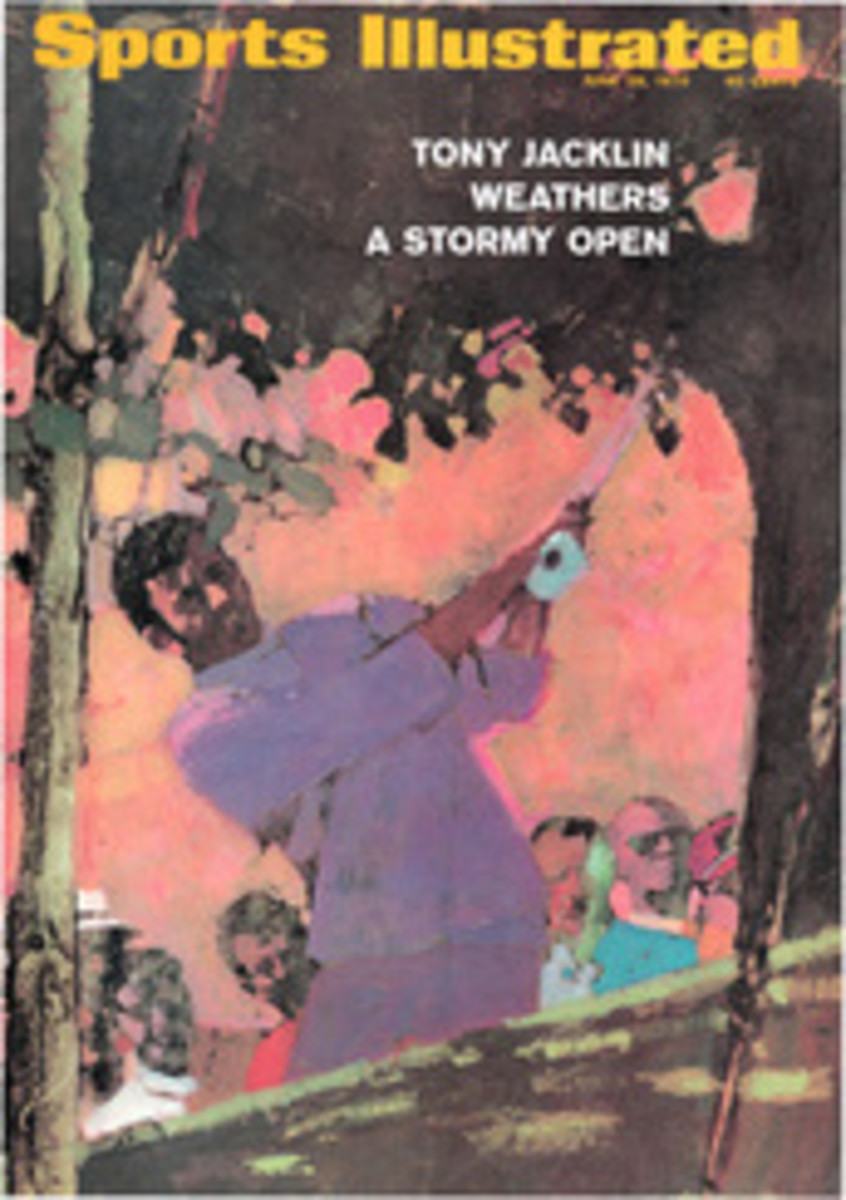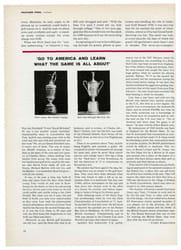
PERHAPS NOT GREAT, BUT HARDLY GUTLESS
Bullfighters are not athletes, but they have much in common with athletes. Their lives are marked by periods of intensity followed by periods of inactivity and, if they are both gifted and lucky, they may earn large sums of money. Like the athlete, the bullfighter may be either folk hero, like Mickey Mantle, or folk villain, like Shoeless Joe Jackson, or both, like Joe Namath.
Cayetano Ordó√±ez y Aguilera ("Ni√±o de la Palma"), 1904-1961, was both folk hero and folk villain. He is widely known in the English-speaking world because of Ernest Hemingway's attention to him and because his much publicized son, Antonio Ordó√±ez, is the finest bullfighter active today, though Hemingway's unflattering assessment of Cayetano in Death in the Afternoon is inaccurate in detail and probably wrong in spirit, if his Spanish contemporaries can be believed.
Without question, Cayetano Ordó√±ez was an unusually good bullfighter, so good that his work in 1924 and 1925 caused critics who should have known better to write that he had greatness and that he could be the originator of a new era in the art. He was what the Spanish call a torero largo, one with a wide repertory. He had a fine cape, and equal facility with the muleta in right or left hand. He was an agile banderillero, and he could kill well when he wanted to. He frequently killed recibiendo (the kill in which the matador stands still as he draws the bull upon the sword by voice and movement of the muleta), the bravest single maneuver in bullfighting. Reliable witnesses speak of his grace, naturalness and his instinct for what the bull would do next, which, linked to his spontaneity, made him exciting and interesting to watch. Authorities are not agreed on the matter of Cayetano's afición, which may be defined as pleasure in bullfighting, as compared to the man who goes through his paces only for money. On one occasion, however, after having been gored, Cayetano refused to let the attendants take him to the infirmary until the next bull came out, one he had admired and wanted to see in action. These many qualities in a single bullfighter are rare, but they are not quite sufficient to lead one to call him great. Cayetano lacked the ability to dominate the bull absolutely, therefore he was often caught. He also lacked certain qualities of character and temperament which arc essential to the truly great bullfighter.
As to the matter of cowardice, every bullfighter in his right mind fears the bull; a large portion of his art lies in his ability to dominate his fear before the animal's charge, yet at the same time project to the spectators the fact of danger and a whiff of his own normal, human fear. Some bullfighters know more fear than others, Cayetano by his own admission among them, but "cowards" by definition cannot be bullfighters. In any case, Cayetano's career, which is a matter of public record, denies the charge.
Born in Ronda and brought up in poverty there and in La Línea, near Gibraltar, Cayetano had no master to teach him his craft. An older brother, Antonio, equally unskilled, worked with him, but essentially he taught himself, which is to say he learned from the bulls, as good bullfighters must do. In 1924 he had his first big success with a corrida of Miura bulls, at that time among the most difficult animals in Spain.
Cayetano was badly gored on March 1, 1925, in Barcelona. He reappeared on March 22, before the wound had closed, and he continued to appear all that season for a total of 70 performances, a very large number before the day of air travel. Throughout his career he appeared in the first plazas of Spain, holding his own in the company of a generation of excellent bullfighters. The bulls he faced had not yet been bred down; they were animals of five or even six years of age, with considerable growth of horn and weighing 500 to 600 kilos.
Despite good seasons in 1926 and 1927 of 68 and 65 corridas, Cayetano's performances became inconsistent and he never again enjoyed the success of his earlier years. Although the facts are clear, the real reasons for his decline remain hidden. In 1926 Cayetano made the error of waging a one-man campaign against critics who took bribes from bullfighters, with the result that his press notices turned blue. His marriage in 1927 appeared to influence him to retire in 1928, although he returned in 1929 for 43 corridas. By now the public wanted more from him than he was willing to offer, and he was often accused of apathy and coldness. He continued to perform until the Civil War in 1936, appearing in 20 to 40 corridas a season. He made token appearances in 1943, and again in 1945, this time as a banderillero (assistant) to Pepe Luis Vàzquez, an ignominious change for the once triumphant matador.
Cayetano was proud of the fact that three of his five sons became bullfighters, Antonio a triumphantly good one, yet his pride was blighted by the apparent suicide of one of his sons. By the early 1950s Cayetano had become an alcoholic and, like many alcoholics, somewhat paranoiac as well. His acquaintances all agree that he was hard to take in his last years. His family was if anything generous.
This is the man Sam Adams found in Madrid in 1955, and describes well here. Bullfighters say that the public can give more serious gorings than the bulls. Cayetano's biography supports the idea.
ILLUSTRATION

